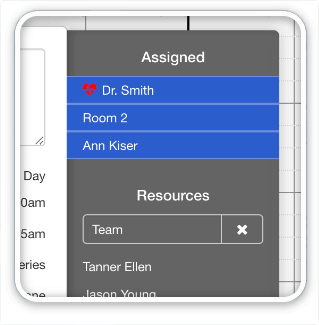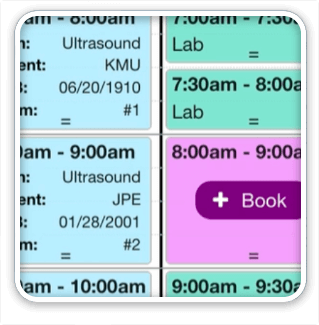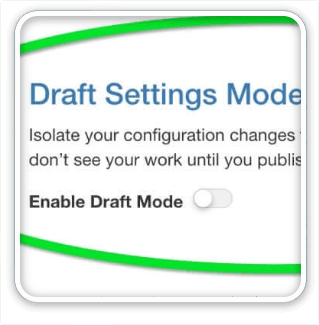For most teams, there’s a fine line between not having enough work and having way too much. DayBack Calendar helps us see the difference. Here’s a behind the scenes look at how SeedCode balances developers’ schedules using DayBack’s calendar analytics.
What’s working here
A couple of key ingredients need to be in place before this kind of scheduling works.
Blocking off time to work. That orange dotted line representing our goal only works if our developer has actually blocked out 5 hours a day to work on this stuff. And that means she’s blocked off other time for correspondence and meetings, and that she’s defending the time she’s blocked off to code. Blocking off uninterrupted time to work is critical.
Getting realistic about capacity. Some shops really overestimate how much you can get done in a day: I think 5 productive hours of coding is almost the most someone can average week after week. You may be able to get in the zone for longer days now and then, and it’s certainly easier if you’re just working on one project week after week. But if you work involves any amount of gear switching, that takes a considerable toll on the kind of focus good coding requires.

(Click for a larger version)
Timeboxing (estimating is too hard). A quick look at the calendar above and you’d be forgiven for thinking we’ve estimated all these jobs down to the hour and the spread those estimates across our calendar. Custom software is incredibly hard to estimate accurately. Instead, we’re timeboxing these deliveries: committing to deliver three, five, or ten hours of work, instead of committing to deliver a specific feature set.
Small chunks (estimate accuracy degrades with size). Planning a series of very small estimates and deliveries makes success much more likely. We spoke about this at DevCon in 2017, and it’s proved itself countless times since then: small chunks make a big difference.
These are calendar problems
The scheduling problems we’re grappling with above are not things you can solve on a spreadsheet or solely inside your project tracking system. Both your deliveries and the time you’ve blocked out to work are meaningless outside the context of your other commitments.
That’s why DayBack shows you multiple calendars at the same time, be that records from different tables and even different FileMaker files. Or you can use DayBack Online to show Google and Basecamp calendars alongside your FileMaker records. At SeedCode, the delivery dates you see in the movie above are FileMaker records, but we’re looking at them in a browser in DayBack Online so each developer can also see their personal Google calendars at the same time.
The key is to make delivery promises in the context of your other commitments; that’s the only way to make promises you can keep.




